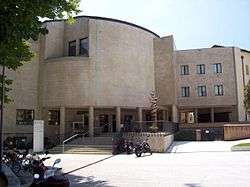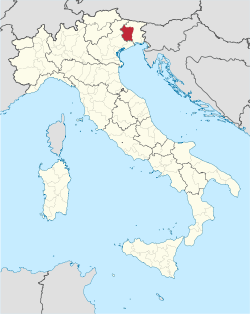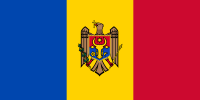Province of Pordenone
| Province of Pordenone | |
|---|---|
| Province | |
 | |
 Map highlighting the location of the province of Pordenone in Italy | |
| Country |
|
| Region | Friuli-Venezia Giulia |
| Capital(s) | Pordenone |
| Comuni | 51 |
| Government | |
| • President | Loris Toneguzzi |
| Area | |
| • Total | 2,273 km2 (878 sq mi) |
| Population (1 January 2016) | |
| • Total | 312,794 |
| • Density | 140/km2 (360/sq mi) |
| Time zone | CET (UTC+1) |
| • Summer (DST) | CEST (UTC+2) |
| Postal code | 33070, 33072-33074, 33076-33077, 33079-33087, 33090-33099, 33170 |
| Telephone prefix | 0425, 0427, 0432, 0434, 0828 |
| Vehicle registration | PN |
| ISTAT | 093 |
The province of Pordenone (Italian: provincia di Pordenone) is a province in the autonomous region of Friuli-Venezia Giulia in Italy. Its capital is the city of Pordenone. The province was subdivided from the province of Udine in 1968. It has a total population of 312,794 inhabitants.[1]
History
Pordenone was settled before 2000 BCE and was situated along the boundary between Villanovan and Alpine Halsatt cultures.[2] It was under the rule of Treviso during the Middle Ages, although it was sacked by Aquileian soldiers in 1233 CE. The Austrian House of Habsburg subsequently ruled the area between 1278 and 1508, although the land surrounding it was briefly entirely under the rule of Venice. In the 15th century it was an important centre for the production of paper, textiles, ceramics, silk, and wool, and attracted Tuscan merchants.[2]
In 1508, Venice occupied the city in response to calls from pro-Venetian residents of Pordenone, but this occupation was not well received. It fell under the rule of Bartolomeo d'Alviano after this occupation until 1537, when Venice invaded the city.[2] It was left under Venetian rule until the invasion of the area by Napoleon in 1797; it was later controlled by Austria between 1813 and 1866. In 1866, it was conquered by the Kingdom of Italy. It was the third Italian city to use hydroelectric power, after Milan and Tivoli, in 1888. It was occupied by Austrians during World War II, and it was bombed forty-three times in World War II.[2]
Geography
The province of Pordenone is the westernmost of the four provinces in the autonomous region of Friuli-Venezia Giulia in northeastern Italy. It is bounded to the east and north by the Province of Udine. To the west lies the Province of Belluno, to the southwest the Province of Treviso and to the south, the Province of Venice, all in the region of Veneto. The province is located in the lowlands of the Po-Venetian Valley, south of the Venetian Prealps and the Alpine foothills of Friuli. It is the only province in the autonomous region that does not border on the Adriatic Sea. The provincial capital is the city of Pordenone, an ancient port on the River Noncello.[3]
Hilly country in the north of the province give way further south to the flat land of the lower Po Valley. Rivers cross the province from north to south carrying runoff from the melting snow in the Alps. Much of the water sinks underground and resurfaces on the plains as a zone of springs.[4]
Foreign community
The top 10 countries of origin of the inhabitants of Pordenone with foreign citizenship at 31 December 2010 were:[5]
 Romania 8630
Romania 8630 Albania 6321
Albania 6321 Ghana 3489
Ghana 3489 India 1821
India 1821 Morocco 1760
Morocco 1760 Ukraine 1308
Ukraine 1308 Macedonia 1044
Macedonia 1044 Bangladesh 970
Bangladesh 970 Moldova 913
Moldova 913 Burkina Faso 826
Burkina Faso 826
References
- ↑ "Provincia di Pordenone". Tutt Italia. Retrieved 19 August 2015.
- 1 2 3 4 Roy Palmer Domenico (2002). The Regions of Italy: A Reference Guide to History and Culture. Greenwood Publishing Group. p. 115–116. ISBN 978-0-313-30733-1.
- ↑ The Times Comprehensive Atlas of the World (13 ed.). Times Books. 2011. p. 76. ISBN 9780007419135.
- ↑ Minelli, Alessandro, ed. (2002). Springs and spring watercourses: Springs in the Northern Italian plains. Italian Habitats. Italian Ministry of the Environment and Territory Protection / Ministero dell’Ambiente e della Tutela del Territorio, Friuli Museum of Natural History / Museo Friulano di Storia Naturale, Comune di Udine. ISBN 88-88192-04-2.
- ↑ ISTAT. "Pordenone". ISTAT. Retrieved 2012-06-06.
External links
- Official website (Italian)
Coordinates: 45°57′N 12°41′E / 45.950°N 12.683°E
